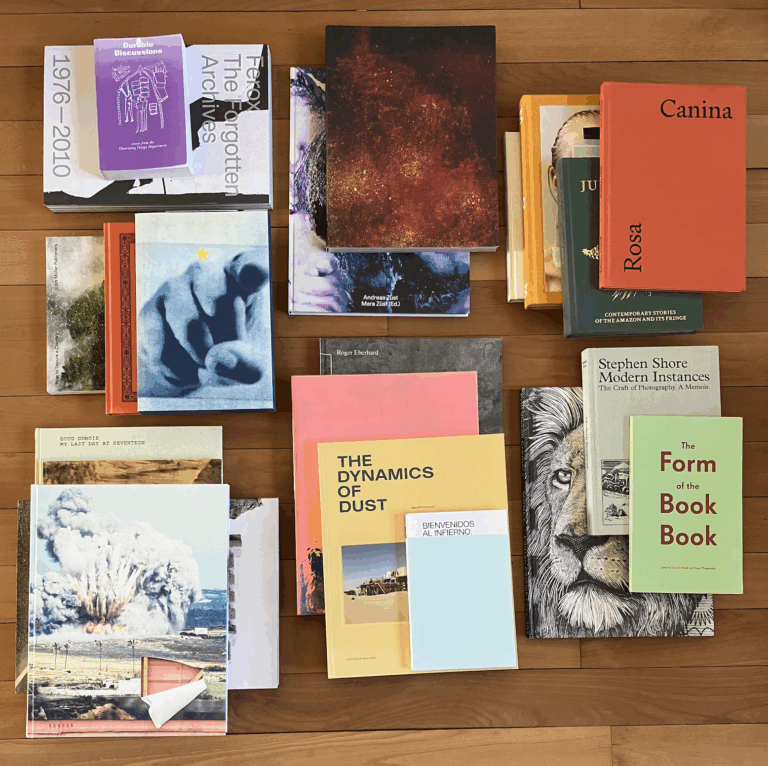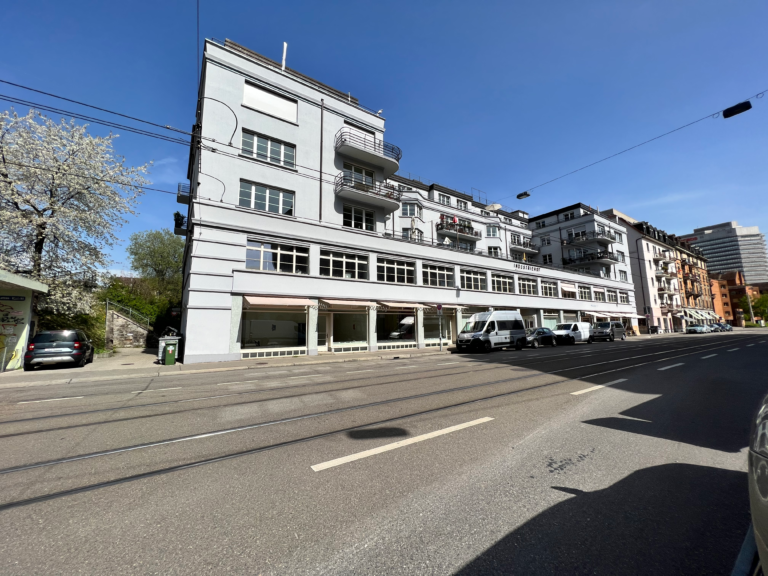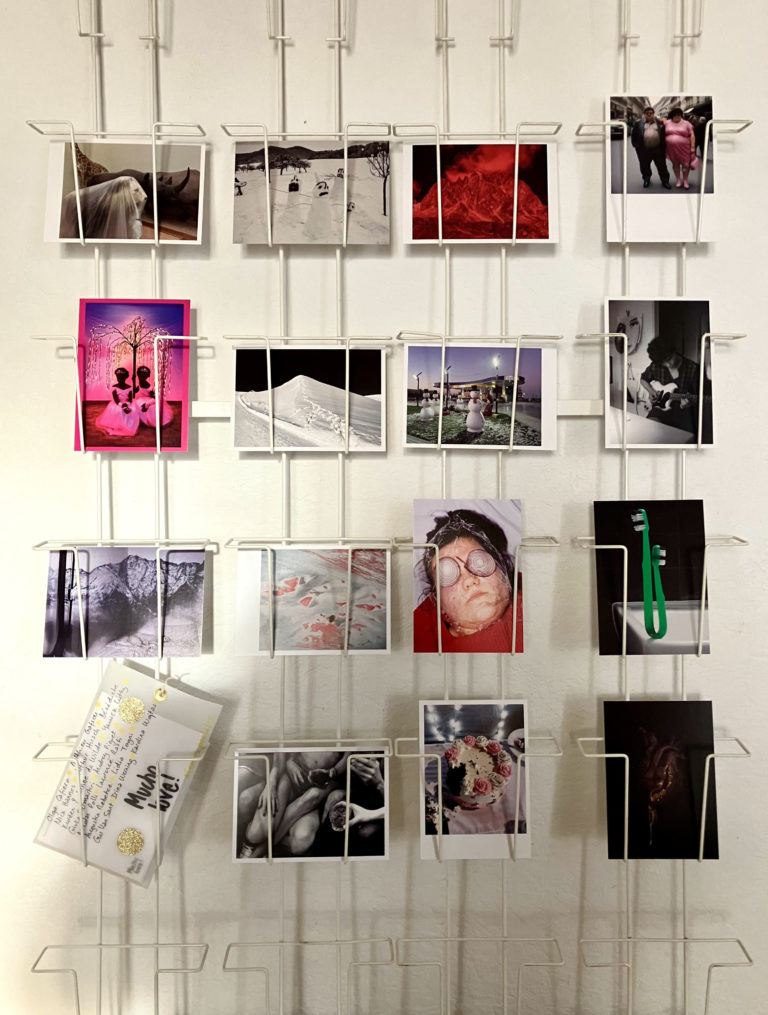View: Grid / List
Location

How do we make photo books? Panel talk at Verzasca Fotofestival
06/09/2025, Sonogno, Verzasca, Ticino
Panel discusssion between photographers, designers and publishers who make photobooks.
Do Photobooks still sell? Why do we need a publisher? How can we find money? Why do we need a designer who understands photography and not just design? What is a Dummy for? Why is it a collaborative process? Why does it take so long to make a book? Why do Photographers need a photobook today?
The future of Photobooks?
Invited speakers:
Brian Paul Lamotte (book designer) Milano
Nicolas Polli (designer, publisher, photographer) Bienne
Giulia Brivio Artphilein (publisher) Lugano
Benoit Chattaway (near member, photographer) Lugano
Nathalie Bissig (near member, photographer) Zurich / Uri
Moderation: Ann Griffin (book designer, near. committee member), Zurich
The Panel and Q+Awill be held in English
Dates: Saturday September 6th — 11:30-13h
Read more

near. in collaboration with Der Greif Studio
20/08/2025
New opportunity for near. members! 🚀
We’re teaming up with @dergreifstudio – a new venture from the internationallynrenowned @dergreif – curating emerging photography & video art for hotels, workspaces and beyond.
About Der Greif Studio
Building on Der Greif’s global artist community, Der Greif Studio curates bespoke selections of artworks for clients in hospitality – including hotels, restaurants, co-working, and commercial real estate spaces. Their aim is to create meaningful connections between emerging artists and these environments, offering early-career artists both visibility and fair financial remuneration through artwork sales.
Who they work with
Der Greif Studio works exclusively with artists who do not have gallery representation.They have reached out to near. as they value the quality of our members, and invite any eligible members to submit their work for consideration.
How it works
–Submission is free – follow the instructions on the submission page via this link.
-If a project matches your work, DGS curators will include it in the proposal. If selected, they’ll contact you directly.
-They work on a collaboration model, not representation – meaning they bring your work into large-scale, often multi-artist projects within a set client/project budget.
-DGS takes care of all production, framing and logistics, handled at their cost
-DGS commissions may also include artist-led activations (talks, workshops, screenings) for additional engagement and exposure.
Current focus
They are currently working on several proposals in Switzerland and Germany, with additional leads in other parts of Europe and Asia.
Deadline
To be considered for these upcoming projects, please submit your work by September 30, 2025 – the sooner, the better.
Learn more
Read the FAQ to understand the process in detail.
Visit their website to see their first projects.
Follow on Instagram and LinkedIn for updates.
Questions?
Once you’ve read the FAQ (the majority of questions are answered there), if you still have questions before/while submitting, you can email Diana Poole at diana@dergreif.studio.
Read more

panel discussion: working with galleries & selling your work
06/05/2025
Panel Discussion
6 May, 18:30
Location: Lullin + Ferrari Gallery, Limmatstrasse 214, Zurich
Open to near. members
Over the past years, many of the members have expressed interest in learning more about marketing your work, collaborating with galleries, and navigating the market. That’s why we’re hosting an informal evening dedicated to open conversation and practical insights. We’ll cover topics like editions, pricing, packaging, framing, insurance—and anything else that comes up.
Participants:
Anna Konstantinova – near. committee & gallerist at Lullin + Ferrari, moderating the discussion
Dominique Teufen – artist & near. member
Diego Brambilla – artist & near. member
Brigitte Lustenberger – artist & near. member
…and more to be confirmed!
Join us for an evening of sharing experiences and tips—followed by an apéro to continue the conversation!
We appreciate if you RSVP at info@near.li or in our direct messages on instagram so that we can plan the drinks!
The event will be held in English (but probably with a mix of French, German and everything in between)!
Read more

near. x Mucho Love – Postcards Edition 2025
05/05/2025—15/05/2025
We’re excited to announce the launch of our next Postcard Edition, produced in collaboration with Mucho Love Editions.
This special set will feature 20 images — each selected from a different near. member. There’s no fixed theme, so feel free to submit up to 3 of your most eye-catching single images, and one of them could be featured in the postcard set!
This is the first in what we plan as a continuing series of postcard editions, each featuring a new collaboration.
All entries will be shown in a continuous loop* during our Apéro at the Rencontres in Arles on July 10. Final event details will follow soon.
The postcards will be printed and distributed free of charge to promote near. and its members.
**Submission Guidelines:**
– Submit only via the form that you received in the near. member mail
– Open to near. members exclusively
– Maximum 3 images per member
– Double-check all details (name, title, etc.) — we won’t be able to make corrections later
– Deadline: May 15, 2025
We’re looking forward to your submissions!
*Note: Depending on the venue’s electricity setup, the screening format may be adapted.
Read more

Call for entries for the near. prize 2025
20/04/2025—02/06/2025
We are thrilled to announce the opening of the call for entries for the near. prize 2025!
The winner of the near. prize 2025 will have the opportunity to showcase their work at Fotofestival Lenzburg 2026, as well as being awarded 1000 CHF and a free one-year near. membership.
This year’s jury panel comprises the following photography experts:
Margherita Guerra, Director and Founder of the Fotofestival Lenzburg,
Manuel Sigrist, Head of Exhibitions, Programmes and Library, Photo Elysee;
the committee of near. counting as one vote.
The call for entries is open from April 20 to June 10, 2025. The winner will be revealed this June, with their exhibition featured in the 2026 edition of Fotofestival Lenzburg.
The theme of the upcoming edition of Fotofestival Lenzburg is Forever Happy: happiness that means everything and nothing nowadays. Please refer to the application form guidelines for comprehensive details.
We eagerly await the submission of your application!
→ Apply now (deadline: Wednesday June 10, 2025)
Download the application form: near-prize_rules_and_application-form – 2025
(*Please note that the near. prize is exclusively reserved for members of the association.)
Read more

Booklette
14/09/2024—15/09/2024, Vevey
Images Vevey and Photo Elysée organize Booklette, a photobook fair bringing together Swiss and international publishers. The equation is simple and convivial: Books + Raclette = Booklette.
near. is taking part by offering members a guided tour of Biennale Images Vevey and the presentation of their publications at a table among the publishers.
Register to take part to the photobook fair and/or follow a guided tour of the biennial exhibitions on Saturday 14 at 11am: info@near.li
Read more

Tiziana Amico, winner near. prize 2024, at Verzasca Foto Festival
30/08/2024, Verzasca
The jury of this year’s near. prize is happy to announce the winner of the edition – Tiziana Amico! Her work will be exhibited at the Verzasca Foto Festival 2024. Come and join us in beautiful Ticino for the opening days August 30 – 31.
Jury statement:
In the project “Nunca Fui Adolescente” (’I Never Was A Teenager’), Amico explores the personal stories of Argentine women who became mothers before adulthood, challenging stigmatized representations of adolescent motherhood, highlighting their resilience and individuality through intimate portrayals created in a collaboration with these young women.
The jury was convinced both by the choice of the author’s subject and the visual decisions taken in the project. The strong visual storytelling is combined with a very personal, almost gentle, approach of Amico to the experiences of these women and the desire to give them a voice and understand their perspective. Through a conscious use of portraiture mixed with images of private writings and symbolic objects, Tiziana Amico manages to create a memorable and powerful, yet very tender visual narrative.
Images credits:
From “Nunca Fui Adolescente” (’I Never Was A Teenager’) by Tiziana Amico
Read more

Arles near. x Pool Collective
04/07/2024, Arles
We are very excited to inform you that the dates and location for our event during the opening week of the Rencontres d’Arles have been confirmed. We are collaborating with Pool collective to host an apéro and present our associations at the Librairie du Palais. Alongside this evening we are organising a DIY poster campaign throughout the city of Arles.
Read more

near. x nuit des images BYOB
22/06/2024, Lausanne
near. photographers will be bringing their beamers and are presenting an abundance of images on the Plateforme 10 esplanade.
Mainly concerned with the themes of nature, artifacts and identity, discover the work of Tiziana Amico, Graziella Antonini, Yann Amstutz, Thomas Annaheim Lambert, Zoé Aubry, Rebecca Bowring, Aline Bovard Rudaz, Delphine Burtin, Margaux Corda, Marie-Pierre Cravedi, Matthieu Croizier, Ankita Das, Tomasz Fall, Matthias Forster, Anne Gabriel-Jürgens, Yann Haeberlin, Fabian Hugo, Emilien Itim, Khashayar Javanmardi, Stephen Kelly, Yann Laubscher, Arthur Lehmann, Samuel Matzig, Cécile Monnier Laurence Rasti, Nora Rupp, Roxana Savin and Mihai Sovaiala.
Read more

near. prize 2024
29/05/2024
We are thrilled to announce the opening of the call for entries for the near. prize 2024!
The winner of the near. prize 2024 will have the opportunity to showcase their work at Verzasca Foto Festival 2024, as well as being awarded 1000 CHF and a free one-year near. membership.
This year’s jury panel comprises of the following fotography experts: Alfio Tommasini, Director and Curator of the Verzasca Foto Festival; Annette Amberg, Director of Coalmine – Raum für Fotografie (Winterthur); and the committee of near. counting as one vote.
The call for entries is open from April 22 to May 29, 2024. The winner will be revealed this June, with their exhibition featured in the 2024 edition of Verzasca Foto Festival.
There is no specific theme for this year’s prize, so please refer to the application form guidelines for comprehensive details.
We eagerly await the submission of your application!
→ Apply now (deadline: Wednesday, May 29, 2024)
(*Please note that the near. prize is exclusively reserved for members of the association.)
Read more

Guided Tour near. prize Pedro Rodrigues
18/05/2024
Special guided tour of the Bieler Fototag/ Journées photographiques de Bienne with Pedro Rodrigues, Rebecca Bowring, Julien Heimann and Sarah Girard
near. is pleased to invite you and your near friend and family to join us for a guided tour of the shows in Bienne / Biel in the very special company of the photographers Pedro Rodrigues, winner of the near Prize 2023, Rebecca Bowring, winner of the near prize 2021, Julien Heimann photographer member of near and Sarah Girard, director of the festival.
The entrance is being taken care by us!
Saturday 18th of May, 2.15pm, meeting point 10 Juraplatz Biel / Bienne
Read more
Created on the occasion of the 10th anniversary of near swiss association for contemporary photography, the “near photographic collection” aims to materialize in a tangible collection the association’s contribution to the Swiss contemporary photography scene since its inception. Its objective is to acquire, one key image for each of the hundred members the association had at its 10-year mark. Furthermore, it is intended to be preserved by a Swiss public institution or museum to endure over time, be showcased by both the association and the institution, serve as the subject of exhibitions and loans, and be accompanied by scholarly documentation.
To ensure the feasibility and sustainability of the collection, near allocates at least a tenth of its annual budget for the acquisition of new images. Fundraising efforts complement and expedite the pace of acquisitions.

Sandrine Lagnaz, Aïto au chat, 2019.

Anne-Sophie Aeby, Sans Titre, Habiter, Consommer, Divertir, 2006-2012

Graziella Antonini, Sapin blanc, 2019

Thomas Brasey, Guillaume Tell, BOAVENTURA, 2017

Sophie Brasey, Cervin, Artefact, 2008

Delphine Burtin, Sans titre, Fragments, 2018

Nicolas Delaroche, Meditation, First Seen, 2021

David Gagnebin de Bons, sans titre (7 bols), 2019

Julien Heimann, Sans titre, BA-40, 2009

Vincent Jendly, Anthropocène, 2021

Brigitte Lustenberger, Still Untiteled, 2014

Olivier Lovey, Paris, 2014

Murielle Michetti, sans titre n° 1, 2004

Virginie Rebetez, Untitled #3, Under Cover, 2013

Delphine Schacher, Arthur, Bois des frères, 2015

Anne-Sophie Aeby, Sans Titre, paille11_110922_15_04

Rebecca Bowring, KnowingThunder
Photographer membership
Applies to active photographers who have developed a personal body of work within the field of contemporary photography whether with a documentarian or an artistic approach.
All members get free access to all near. activities and the possibility to apply for free for the ‘near. prize’, as well as various benefits from our partners.
Become a member
Membership fee: CHF 100.– per year.
Applicants for a photographer membership are selected by nears.’ committee based on their portfolio.
Young photographers (also selected on the basis of their portfolio) benefit from a free one-year membership, as long as they are students or graduated within a year.
Note that the near. membership only extends to Swiss nationals or people that live and work in Switzerland.
Selection Criteria
The acceptance of new members into the association is done by the committee following a series of selection criteria which include, among others, the originality of the submitted project and the artist’s vision, the body of work’s aesthetic quality, the coherence between the content and the form given to it, the integration of the submitted work into the author’s broader artistic project and, finally, the relevance of the project in relation to the current challenges faced by the photographic medium.
near. Network members
Art historians, art critics, curators, associations, institutions, publishers, museums, as well as key people in the field of photography are welcome to be part of our Network.
Free of charge, this Network is intended to foster connections between our photographers and the photography world. We regularly invite Network members to be part of our jury’s, crit groups or events. Get in touch to be on our website.
Application
A single PDF document, with the following content (please do not exceed 20 MB)
1) 10–20 images (ideally at least two projects, no single images)
2) a written overview statement of the project(s) in english or french
3) a CV and/or Biography
4) full contact and site
* Please note that applications not corresponding to the above guidelines will be rejected.
Send to: info@near.li
Procedure
Please send us all content, as listed below. The committee gets together 2 times a year to consider applications and discuss the subscriptions.
Deadlines to submit your portfolio:
March 1st and September 1st of each year.
Expectations
— Do one Takeover of the near. Instagram account.
— Be ready to participate in the ‘near. photographic collection’ which consists of a collection of one print per artist (production is paid by near. selection is done in chronological order of acceptance).— Pay each years membership in due time.
— If possible participate to the General Assembly and of course to our events.
Français
near. a été fondée à Lausanne en 2009 et son but principal est de promouvoir la photographie contemporaine. L’association organise ses activités autour de quatre objectifs principaux: diffuser le trav… read more
Deutsch
near. wurde 2009 in Lausanne gegründet, um die zeitgenössische Fotografie zu fördern. Der Verein organisiert Aktivitäten, die sich auf vier Hauptziele konzentrieren: die Förderung und Verbreitung der … read more
English
near. was founded in Lausanne in 2009 and its principal aim is to promote contemporary photography. The association organizes activities set around four main objectives: to promote and disseminate the… read more
Italiano
near. è stata fondata a Losanna nel 2009 con l'obiettivo principale di promuovere la fotografia contemporanea. L'associazione organizza attività intorno a quattro obiettivi principali: promuovere e di… read more
Committee
Anna-Tia Buss
Ann Griffin
(*1981, Lugano, CH) works as a graphic designer specialised in editorial design. Based in Zürich, she collaborates with publishers, photographers and artists on different projects. Her main focus is book design with a particular interest in photography books. She has led numerous workshops in different art schools, as well as her own Photobook retreat in the mountains. Since 2017 she is a committee member of near. (Swiss association for contemporary photography).
Victoria Mühlig
Miriam Edmunds
Anna Konstantinova
(*1990, Samara, RU) is a Zurich-based curator specializing in contemporary photography, post-photography, and curating in digital spaces. She is the Curator and Gallery Manager at Lullin + Ferrari Gallery and is responsible for art and architecture projects at the Canton of Zurich. Anna is also part of the team at Screen Walks, a collaborative project by Fotomuseum Winterthur and The Photographers’ Gallery that investigates the evolving role of photographic images in networked and digital spaces. Additionally, she is a member of the pool collective, a self-organized group of artists and creatives in Zurich working in photography, and serves on the committee of near.association, which promotes contemporary Swiss photography and fosters critical discourse in the field.
Audrey Zimmerli
Thanks to: Nassim Daghighian (founder of near.), and all past committee members.
Contact
Partners
To be updated…
Support
near. is supported by:
- Etat de Vaud
- Ville de Lausanne
Credits
Concept, Design and Code: UNSTATED
Font: Everett by Nolan Paparelli
Copyright © 2024, near., Lausanne, Switzerland.
All rights reserved.
No content may be reproduced or distributed without the written permission by near. and the photographers.
91 out of 91 results
near.
swiss association for contemporary photography